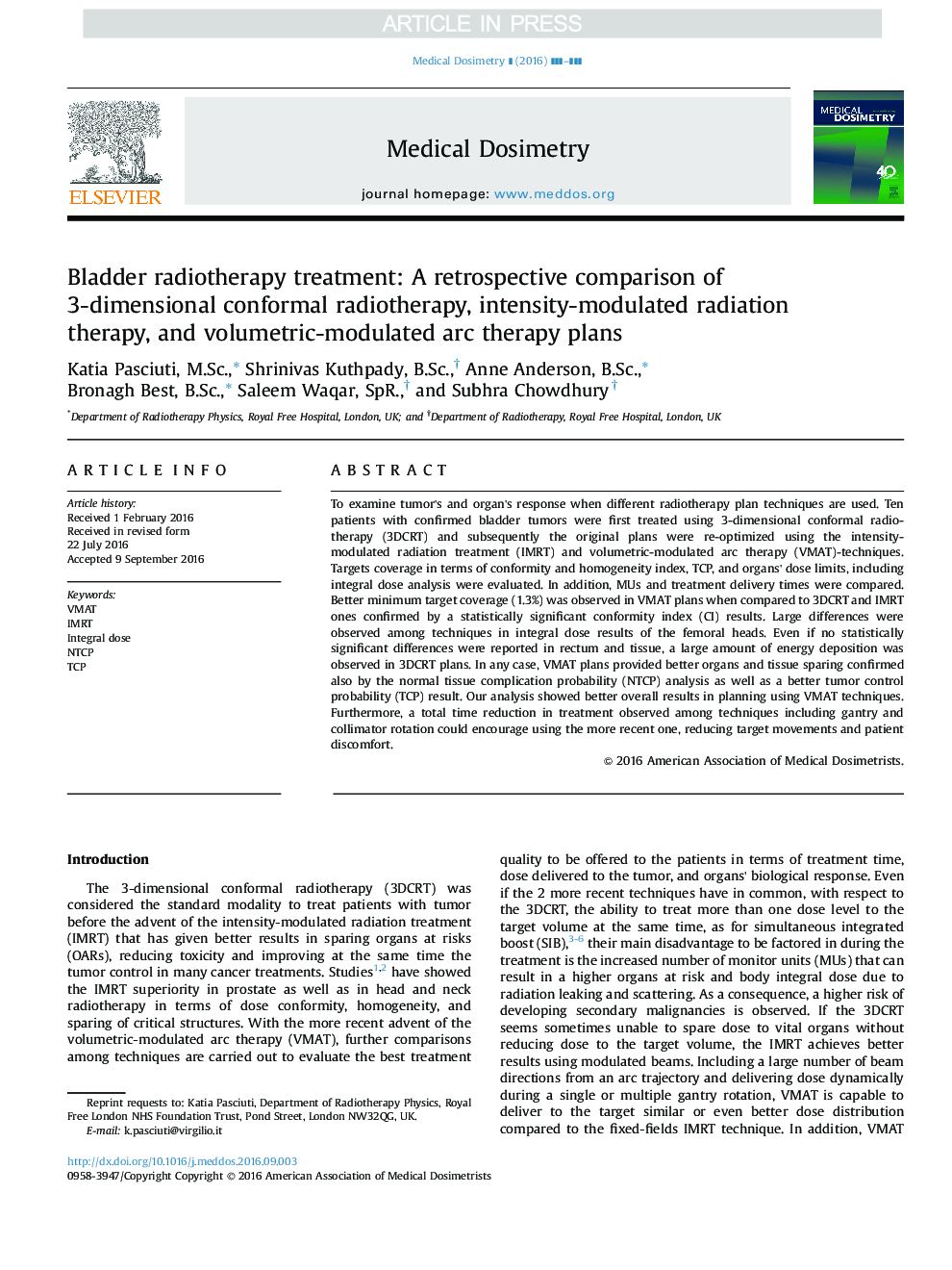| Article ID | Journal | Published Year | Pages | File Type |
|---|---|---|---|---|
| 5498176 | Medical Dosimetry | 2017 | 6 Pages |
Abstract
To examine tumor׳s and organ׳s response when different radiotherapy plan techniques are used. Ten patients with confirmed bladder tumors were first treated using 3-dimensional conformal radiotherapy (3DCRT) and subsequently the original plans were re-optimized using the intensity-modulated radiation treatment (IMRT) and volumetric-modulated arc therapy (VMAT)-techniques. Targets coverage in terms of conformity and homogeneity index, TCP, and organs׳ dose limits, including integral dose analysis were evaluated. In addition, MUs and treatment delivery times were compared. Better minimum target coverage (1.3%) was observed in VMAT plans when compared to 3DCRT and IMRT ones confirmed by a statistically significant conformity index (CI) results. Large differences were observed among techniques in integral dose results of the femoral heads. Even if no statistically significant differences were reported in rectum and tissue, a large amount of energy deposition was observed in 3DCRT plans. In any case, VMAT plans provided better organs and tissue sparing confirmed also by the normal tissue complication probability (NTCP) analysis as well as a better tumor control probability (TCP) result. Our analysis showed better overall results in planning using VMAT techniques. Furthermore, a total time reduction in treatment observed among techniques including gantry and collimator rotation could encourage using the more recent one, reducing target movements and patient discomfort.
Keywords
Related Topics
Physical Sciences and Engineering
Physics and Astronomy
Radiation
Authors
Katia M.Sc., Shrinivas B.Sc., Anne B.Sc., Bronagh B.Sc., Saleem SpR., Subhra Chowdhury,
